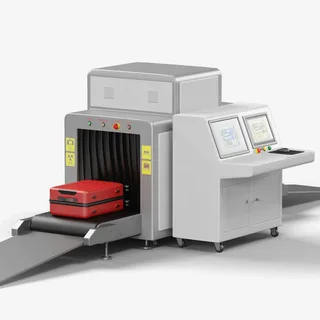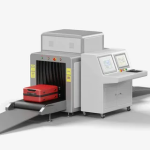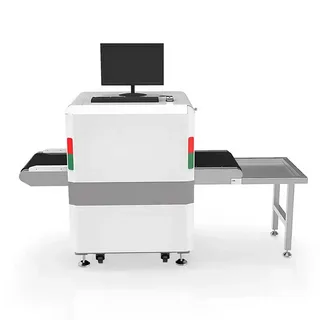5 Common Misconceptions About X-Ray Baggage Scanners

X-ray baggage scanners are a crucial component of modern security systems, especially in airports, train stations, and other public venues. They help ensure safety by detecting prohibited items and potential threats inside luggage. However, there are a number of misconceptions about how X-ray baggage scanners work, what they do, and their impact on personal belongings. In this blog, we’ll debunk five common misconceptions about X-ray baggage scanners.
Misconception 1: X-Ray Baggage Scanners Damage Electronic Devices
One of the most widespread misconceptions is that X-ray baggage scanners can damage electronic devices, such as laptops, smartphones, and cameras. This belief may stem from concerns about how X-rays can interact with electronic components.
In reality, the radiation emitted by X-ray baggage scanners is extremely low and poses no threat to electronic devices. These scanners are specifically designed to ensure that luggage can pass through without any harm to its contents. Laptops, phones, and other electronics are routinely passed through X-ray scanners without suffering any damage. In fact, X-rays used in baggage scanners are less intense than the X-rays used in medical imaging, such as those taken at a hospital. Your gadgets are completely safe during the scanning process.
Misconception 2: X-Ray Scanners Expose You To Dangerous Radiation
Another common misconception is that X-ray baggage scanners expose people to harmful levels of radiation. Some travellers worry that the X-rays used in the scanning process might be a health hazard, either to themselves or their luggage.
In reality, the amount of radiation emitted by X-ray baggage scanners is minuscule and not harmful to human health. Passengers do not come into direct contact with the X-ray beams; only the luggage is scanned. Furthermore, these machines are heavily regulated and designed to ensure that any radiation exposure remains far below harmful levels. To put it in perspective, the radiation from an X-ray baggage scanner is comparable to the radiation a person naturally receives from the environment during a short flight. There is no need to worry about health risks when your bag is scanned at security checkpoints.
Misconception 3: X-Ray Scanners Can See Inside Personal Items Like Wallets Or Documents
Some travellers believe that X-ray baggage scanners can expose every detail inside their personal items, like wallets or documents, leading to privacy concerns. They may fear that sensitive information, such as credit card numbers, might be visible to security personnel.
This is a misconception. X-ray scanners generate a detailed image of the contents of a bag, but the scan primarily highlights dense materials, such as metals and plastics, which might indicate the presence of weapons, electronics, or other prohibited items. Thin materials like paper and plastic cards are visible but not in detail. Security personnel are not interested in the specifics of personal items like wallet contents; their focus is on identifying potential threats or illegal substances. Your personal information remains private during the scanning process.
Misconception 4: X-Ray Scanners Are Infallible
While X-ray baggage scanners are highly effective tools for detecting prohibited items, they are not foolproof. Some travellers assume that X-ray scanners can detect anything and everything, including liquids, explosives, and hidden compartments.
In reality, X-ray scanners rely on the skill and judgment of trained operators who interpret the images produced by the scanner. While these machines are very effective at identifying potentially dangerous items, the human element plays a significant role. Poor training or lack of attention can sometimes lead to items being missed. That’s why most airports and security systems use multiple layers of screening and employ highly trained personnel to minimize the risk of human error. Some newer scanners also incorporate advanced software with AI capabilities to enhance detection accuracy.
Misconception 5: You Should Remove All Electronics And Metal Objects For Scanning
There is often confusion about what items need to be removed from luggage before passing through the scanner. Many travellers believe that all electronic devices or metal objects must be taken out for proper scanning.
However, in most cases, small electronic devices and metal items do not need to be removed from your luggage. Only larger items, like laptops or tablets, are usually required to be placed in separate bins. This helps create a clearer image on the X-ray scan and allows security personnel to inspect these items more thoroughly. Always follow the instructions of security personnel at the checkpoint, as they will guide you on what needs to be removed and what can stay in your bag.
Conclusion
X-ray baggage scanners are an essential tool for maintaining security in high-traffic areas, but they are often misunderstood. The key takeaway is that X-ray scanners are safe, efficient, and designed to protect both travelers and their belongings. Understanding the reality behind these common misconceptions can help ease any concerns the next time you pass through a security checkpoint. Whether you’re worried about your electronics or your privacy, rest assured that these scanners are there to keep everyone safe without causing unnecessary harm or invasion of privacy.



